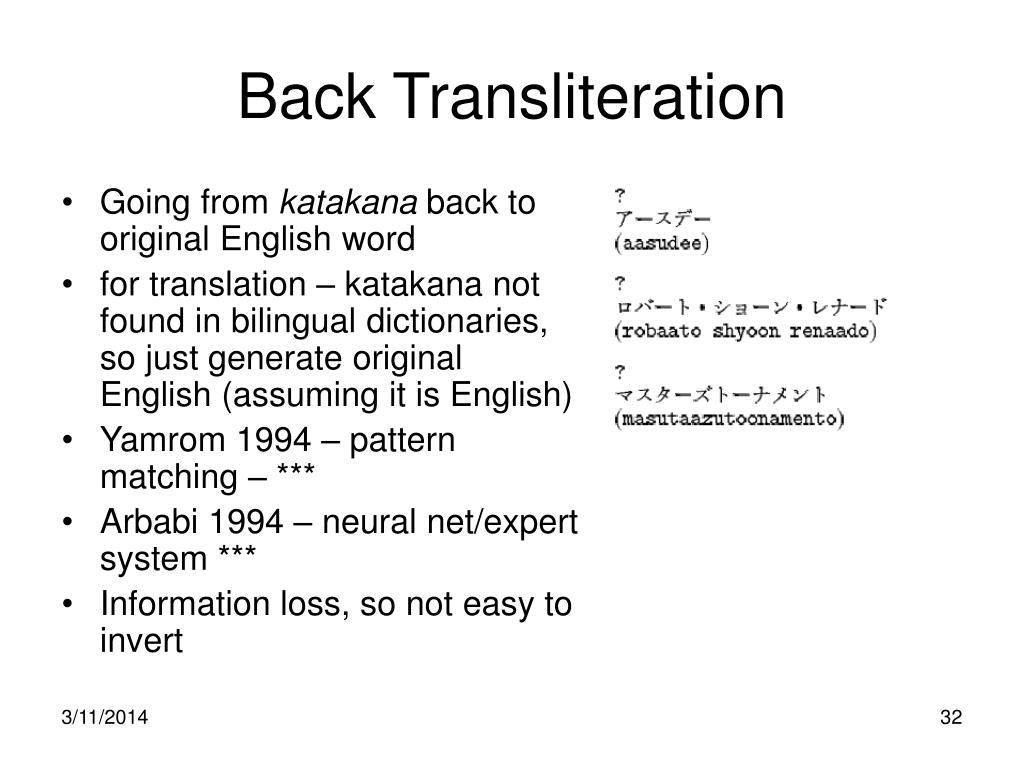
- #TRANSLITERATION MAC OS X#
- #TRANSLITERATION MAC OS#
- #TRANSLITERATION PDF#
- #TRANSLITERATION INSTALL#
- #TRANSLITERATION UPDATE#
#TRANSLITERATION MAC OS#
Mac OS users may have to Control-click to save the file.
#TRANSLITERATION PDF#
Right-click and select “Save Target As…” to save the PDF file to disk. JavaScript must be enabled to display the email address.Ĭlick the language name to view or download the PDF file. Send any comments, suggestions, questions, etc. Get short notices of site updates with any RSS client using this URL: Take a look at the Place Names Database – its an excellent resource for alternate and minority place names.Ī thank you to everyone who provided comments and corrections. Skills will allow everyone is invited to send me their correctionsĪ big thank you to Eesti Keele Instituut for supporting this site. They are as accurate as the sources used and as my typing

#TRANSLITERATION MAC OS X#
The problem does not occur in Mac OS X when using either Adobe Reader or Preview.
#TRANSLITERATION INSTALL#
This only applies to Windows when using Adobe Reader. Language Transliteration - The best language transliteration app in windows store.you can now change text one language to another language.No need to install custom fonts. : There are some problems displaying some fonts in the newly updated Arabic and Macedonian documents. Anyway, I have uploaded larger versions without optimization – and they seem to work. Apparently Adobe Reader 8 was not affected. Well, the problem was with Adobe Reader 7 and below and optimized PDFs. A follow-up to the optimized PDF problem earlier this month.
#TRANSLITERATION UPDATE#
I got some feedback on Rusyn and decided to do a fast update correcting all errors. : Another year almost passed without any work. For example, it is possible with this technique to use a qwerty keyboard to type text in Cyrillic.Transliteration of Non-Roman Scripts Transliteration of Non-Roman ScriptsĪ collection of transliteration and transcription tables for various writing systems. Transliteration also enables the use of a keyboard in a given script to type in a text in another one. When a user performs a search or indexes content, the transliteration process can find the information written in a different alphabet and returns it into the user’s script. Transliteration is when a translator takes a word in one language (i.e., Greek word apostlos), adjusts it a little to make it look and sound more like another. Transliteration is particularly used by libraries or for the processing of textual data. If the source word means nothing in the given language, its transliterated form will also mean nothing, even though it will look like a word in that language as it will be written in its alphabet or syllabic system. In other words, there is no translation involved.

The transliteration process means that a word written in a character set like the Latin alphabet is transposed in another, say the Inuktitut syllabics. Romanization (or Latinization) is the transliteration of a non-Latin script into a Latin script. There are many, but the most used for romanization are ISO-9 (for cyrillic), ALA-LC (to represent bibliographic names in the English-world libraries), and BGN/PCGN (for geographical names and personal names). These standards define the transliteration rules: which characters are replaced by which others, and in which case.


This is why transliteration standards are used. In a word, the transliteration of a transliterated text should return the original text. The main goal of this conversion operation is to enable the automatic and unambiguous recreation of the original (which is also known as retroconversion). The use of diacritics or digraphs solves the problem of different number of characters between the alphabets of the two writing systems. Transliteration consists in representing the characters of a given script by the characters of another, while keeping the operation reversible.


 0 kommentar(er)
0 kommentar(er)
